A Dracula Retrospective: From Devil Incarnate To Tragic Lover
“I could feel the soft, shivering touch of the lips on the super sensitive skin of my throat, and the hard dents of two sharp teeth, just touching and pausing there. I closed my eyes in languorous ecstasy and waited, waited with beating heart.” –Dracula (1897)
It’s practically a truism that Count Dracula is the King of Vampires, and for good reason. Bram Stoker’s original creation sprang off the page followed by a gush of blood and flash of fangs. He was the violent underbelly of Victorian society, the invasive disease, the walking corpse come to carry off wilting Victorian maidens and drive grown men mad. He was violence, sex, and sadism incarnate, covered by a thin veneer of aristocratic respectability. He was the greatest vampire of them all, and his lore has carried through the ages of page, stage and screen. He’s been played by actors as diverse as Gary Oldman and Bela Lugosi, Klaus Kinski and Gerard Butler. Yet modern versions of Dracula often rob him of his terror and exchange it for palpitating romance. How on earth did Dracula go from evil monster to tragic lover in just over a hundred years?
The Vampyre (1819)
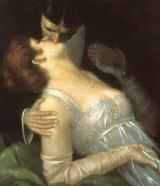 Dracula might be the most popular and well-known vampire story, but it was by no means the first. Much of the Count’s popular characterization does not come from Stoker’s source novel, but rather from the tales that came before it.
Dracula might be the most popular and well-known vampire story, but it was by no means the first. Much of the Count’s popular characterization does not come from Stoker’s source novel, but rather from the tales that came before it.
John Polidori’s Gothic narrative The Vampyre bears a startling resemblance to many versions of Dracula. The Byronic anti-hero Lord Ruthven (based on Polidori’s friend Lord Byron) is an attractive but cold aristocrat who appears in London society from seemingly nowhere. Ruthven befriends a young man named Aubrey and travels with him in Italy and then Greece, followed by a series of seductions and strange deaths. Ruthven finally preys on Aubrey’s sister, but not until he’s died once, drawing a desperate promise from his friend to not reveal Ruthven’s death for a year and a day.
Polidori’s description of Ruthven might as well be a description of Bela Lugosi or Gary Oldman:
“In spite of the deadly hue of his face, which never gained a warmer tint, either from the blush of modesty, or from the strong emotion of passion, though its form and outline were beautiful, many of the female hunters after notoriety attempted to win his attentions, and gain, at least, some marks of what they might term affection.”
His attractiveness to women is exceeded only by the danger he poses to them; he is the seducer of other men’s wives and the source of everlasting destruction to all he comes in contact with.
Polidori’s work is one of the first ‘gentleman vampire’ narratives, and more closely parallels incarnations of Dracula than Stoker’s later novel. Ruthven is what we think of when we think of the gentleman vampire: a charming aristocrat prone to dissipation, wandering the drawing rooms of London seducing lovely Victorian maidens only to drink their blood.
Dracula (1897)
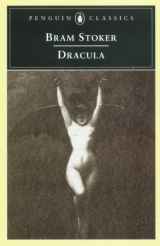 Bram Stoker appropriated some concepts from Polidori, but he did not give his titular count the same cold-blooded charm when he wrote his only famous novel. His Dracula is not a seducer of women, but a rapist, a violator, a force of pure and malign evil. He has not sold his soul to Satan; he is as close to a modern incarnation of evil as a monster can be.
Bram Stoker appropriated some concepts from Polidori, but he did not give his titular count the same cold-blooded charm when he wrote his only famous novel. His Dracula is not a seducer of women, but a rapist, a violator, a force of pure and malign evil. He has not sold his soul to Satan; he is as close to a modern incarnation of evil as a monster can be.
If all you’ve ever seen of Dracula is Bela Lugosi, Gary Oldman or any other bloodsucker in a big cape, then you have not truly experienced the character’s original terror. Dracula is told through a series of journal entries interspersed with newspaper articles, beginning with the adventures of Jonathan Harker in the Carpathian Mountains. The union of sex and death becomes obvious in Harker’s victimization by Dracula’s three vampiric brides. Unlike later film and stage versions, the sexual attraction of vampirism manifests itself in the female vampires or victims, not in Dracula himself. Stoker establishes his Dracula as an otherworldly, ancient monster, an old man dreaming of an epic past:
“His face was a strong, a very strong, aquiline, with high bridge of the thin nose and peculiarly arched nostrils, with lofty domed forehead, and hair growing scantily round the temples but profusely elsewhere. His eyebrows were very massive, almost meeting over the nose, and with bushy hair that seemed to curl in its own profusion. The mouth, so far as I could see it under the heavy moustache, was fixed and rather cruel-looking, with peculiarly sharp white teeth. These protruded over the lips, whose remarkable ruddiness showed astonishing vitality in a man of his years. For the rest, his ears were pale, and at the tops extremely pointed. The chin was broad and strong, and the cheeks firm though thin. The general effect was one of extraordinary pallor.”
Dracula is far from the pretty foreigner women dream of at night. One might almost mark out Dracula’s character from what he is not. He isn’t a gentleman, well-dressed and attractive. His power does not reside in seduction, but in force: he all but rapes both Mina Harker and Lucy Westenra. He is not attractive: even when he begins to grow younger, he’s described as cruel and animal-like, compared to bats, rats and wolves. His death, when it comes, is not a tragic release from a hellish existence, but a violent and bloody end that he fights every step of the way. He manages to corrupt even his complacent Victorian enemies, as they indulge in dark rites, crypt-robbing, violation and murder to rid the world of his presence. Dracula is not an anti-hero or a romantic figure; he’s the darkness at the heart of Victorian society.
Nosferatu: A Symphony Of Horror (1922)
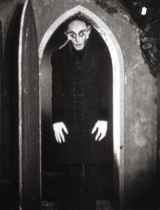 F.W. Murnau’s Nosferatu is the first proper cinematic tale of the vampiric undead, the first film adaptation of Bram Stoker’s work, and perhaps one of the few adaptations to do justice to the original character of the Count. Due to a lawsuit between Stoker’s estate (headed up by his widow) and the production company, the film was forced to change the names of the vampire and his victims. Dracula becomes Count Orlok, Harker becomes Hutter and Mina becomes Ellen. But there’s not a shadow of a doubt that Nosferatu is a Dracula adaptation. The plot, the characterization, and the political and sexual undercurrents are all well in keeping with Stoker’s original vision.
F.W. Murnau’s Nosferatu is the first proper cinematic tale of the vampiric undead, the first film adaptation of Bram Stoker’s work, and perhaps one of the few adaptations to do justice to the original character of the Count. Due to a lawsuit between Stoker’s estate (headed up by his widow) and the production company, the film was forced to change the names of the vampire and his victims. Dracula becomes Count Orlok, Harker becomes Hutter and Mina becomes Ellen. But there’s not a shadow of a doubt that Nosferatu is a Dracula adaptation. The plot, the characterization, and the political and sexual undercurrents are all well in keeping with Stoker’s original vision.
The centerpiece of the narrative is Max Schreck’s Orlok – his long curved nose, sharp incisors, pointed ears and long fingernails are all a part of cinematic legend. Murnau’s film takes the notion of invasion and disease (an undercurrent in Stoker’s novel) and instills it in the physical being of Orlok. Orlok arrives like a pestilence, his shadow extending over the countryside, leaving death in his wake. His shadow stretches and grasps at the hearts of young women, infecting them. His physical appearance recalls rats, but also contains vaguely racial undertones (the film has been criticized for giving Orlok stereotypically Jewish features). He’s defeated not by a combination of intellects and brute force, but by the love of one woman.
In order to save her husband – and by extension the entire country – Ellen gives herself to Orlok, offering up her throat as sacrifice. Attracted to her purity and beauty, Orlok cannot resist her. She keeps him in her bedroom until the sun comes up and Orlok crumbles into dust. It’s a pathetically sublime moment as Schreck writhes into nothingness, his death symbolic of the death of disease and the ultimate sacrifice of a selfless woman. With shades of German Romanticism cascading over the film, Nosferatu’s Expressionist appearance brings the Gothic into cinema and Dracula onto the screen.
Dracula (1931)
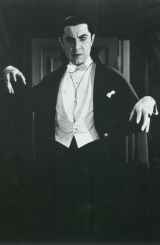 If Nosferatu seemed an inauguration of the vampire as diseased corpse, it was short-lived. Dracula remained cinematically dormant for almost ten years following Nosferatu and Mrs. Stoker’s subsequent attempts to get the entire film suppressed for copyright violation. Then John Balderston and Hamilton Deane had the opportunity to turn the novel into a play, and did so with Dracula in 1927. It was here that the Count transformed from a disease-ridden monster into the foreign lover who offers all the seduction of death.
If Nosferatu seemed an inauguration of the vampire as diseased corpse, it was short-lived. Dracula remained cinematically dormant for almost ten years following Nosferatu and Mrs. Stoker’s subsequent attempts to get the entire film suppressed for copyright violation. Then John Balderston and Hamilton Deane had the opportunity to turn the novel into a play, and did so with Dracula in 1927. It was here that the Count transformed from a disease-ridden monster into the foreign lover who offers all the seduction of death.
Tod Browning’s 1931 film Dracula came on the heels of Lugosi’s appearance in the stage version of Dracula, on which the film was largely based. Balderston and Deane created a sort of social psycho-drama out of Stoker’s more kinetic Count, giving Dracula the space to flow in and out of the drawing-room rather than the crypt. Lugosi’s Hungarian accent and dark good looks made him perfect for the cinema: he was Rudolph Valentino with fangs. Dracula here is a foreign aristocrat seducing wispy London maidens, this time in the present day. Browning’s Dracula takes the notion of plague, pestilence and whispers of racism and folds them into an attractive package. Dracula is a seducer, not a rapist, enfolding and engulfing in his black opera cape.
Lugosi’s portrayal combines the stylization of Expressionism and romantic notions of the foreign aristocrat. This translates into sexual attraction and the dissipation of the Other. Lucy Weston dreams of a dark Gothic castle and mysterious lover; the Count subsequently breaks into her bedroom and drinks her blood. We never see the actual act of biting – it is as though penetration is sexual act, and the scene fades out before the audience can see it.
The 1931 Dracula might look dated now, but we must remember that it’s one of the first talking monster movies produced by Universal, alongside Frankenstein and The Mummy. Lugosi’s stilted speech was a result of a combination of his own thick accent, the necessities of early sound films, and extreme stylization, giving Dracula a halting and otherworldly intonation, as though he’s not used to talking to living people. Borrowing Expressionist elements from films like Nosferatu, Browning created an attractive vision of the living dead.
The Horror of Dracula (1958)
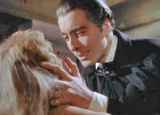 After Lugosi, not much happened to old Drac for about twenty years or so. In fact, the titular monster slowly began to transform into a figure of fun. Lugosi only played Dracula in two films, Dracula and Abbott and Costello Meet Frankenstein. His performance was so iconic that it inspired a slew of imitators, including semi-sequels Dracula’s Daughter, Son of Dracula, and House of Dracula, all of which have almost nothing to do with the actual vampire. The notion of the attractive aristocratic vampire was ingrained in the culture. Yet for all that his ubiquity, Dracula wasn’t much of cinematic force. He would not really return properly until the mid-1950s, thanks to Britain’s Hammer Studios.
After Lugosi, not much happened to old Drac for about twenty years or so. In fact, the titular monster slowly began to transform into a figure of fun. Lugosi only played Dracula in two films, Dracula and Abbott and Costello Meet Frankenstein. His performance was so iconic that it inspired a slew of imitators, including semi-sequels Dracula’s Daughter, Son of Dracula, and House of Dracula, all of which have almost nothing to do with the actual vampire. The notion of the attractive aristocratic vampire was ingrained in the culture. Yet for all that his ubiquity, Dracula wasn’t much of cinematic force. He would not really return properly until the mid-1950s, thanks to Britain’s Hammer Studios.
Dracula came back with a vengeance in 1958’s The Horror of Dracula (or just Dracula, depending on who you ask). It’s a rehashing of the basic Dracula narrative: Harker’s arrival at Castle Dracula, the Count preying on lovely Victorian damsels, and the face-off between Dracula and his superb nemesis Van Helsing (played to perfection by Peter Cushing). While there are some notable differences between the film, the 1931 version and the novel, the plot is essentially the same, giving Van Helsing a major role in the destruction of the nasty vampire.
What sets The Horror of Dracula apart from the 1931 film is the indulgence in blood and bodices. The film was so explicit that it earned an X rating in Britain. The connection between vampirism and sadistic sexuality comes to the front, no longer subsumed under fade-outs or whispered implications. The Horror of Dracula makes Dracula a powerful and sexual monster. As played by Christopher Lee – back then a very tall, very handsome young man, even with red contacts – Dracula’s attacks on both Lucy and Mina are more explicitly comparable to intercourse. The Horror of Dracula touches on Stoker’s thematics in a more direct way than ever before, combining the urbane charm of Lugosi’s portrayal with the violence/violation motifs present in the novel itself.
Lee and Cushing would appear in a handful of increasingly more bizarre and explicit Dracula features for Hammer Studios, including Taste the Blood of Dracula, Dracula Has Risen From The Grave, and Dracula A.D. 1972. By the time the late 70s rolled around, Dracula had gone back to being a caricature and the films an excuse for gyrating breasts and buckets of blood. Hammer succeeded, however, in establishing the Count as a force of violence and malevolence; he’s not someone to be pitied or sympathized with. Dracula is evil, and evil he shall remain.
Until, that is, the advent of disco.
Dracula (1979)
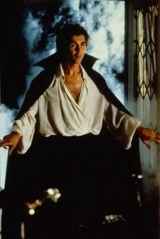 Browning’s 1931 Dracula hints at the vampire as a semi-tragic or romantic figure, giving Lugosi a short but poignant speech about how wonderful it must be to be truly dead. But it never makes him into aught but a monster, and Lee’s performance solidified the attractive but unsympathetic evil. Then Frank Langella came along.
Browning’s 1931 Dracula hints at the vampire as a semi-tragic or romantic figure, giving Lugosi a short but poignant speech about how wonderful it must be to be truly dead. But it never makes him into aught but a monster, and Lee’s performance solidified the attractive but unsympathetic evil. Then Frank Langella came along.
If Lugosi imbued Dracula with a hint of romantic tragedy, Langella went full frontal in Dracula (1979). His Dracula is no longer a monster, but a Byronic hero much closer to Lord Ruthven, complete with feathered hair and unbuttoned shirt. He sweeps into frame with eyes already glowing in passion, and climbs through Mina’s window like a dark knight. The film looks like an Evanescence music video, full of Gothic corridors and heaving bodices, as Dracula meets, seduces and falls in love with Lucy Seward. The romance is the focus of the film, right down to the disco-style love scene as Dracula sweeps into Lucy’s bedroom. Their love is a tragic romance, not a tale of terror.
While it’s easy to make fun of the over-stylization of Langella’s performance in Dracula, the film is the final transformation of the character from otherworld monster to tragic lover. Dracula finds solace with Lucy; he falls for her, and more than once he intimates a horror at himself and what he must do to survive. He is the monster in need of saving by the love of a woman; Lucy longs to join him in his torture. Their Gothic romance is consumptive and passionate; even Dracula’s destruction has a sort of sexual release to it, and the film promises that Lucy will carry on his diabolical work and join her lover in the great beyond.
Nosferatu: Phantom of the Night (1979)
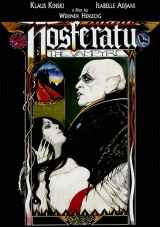 If Langella was not enough to make Dracula into the romantic and tragic figure, even Nosferatu had its own kind of transformation.
If Langella was not enough to make Dracula into the romantic and tragic figure, even Nosferatu had its own kind of transformation.
1979 seemed a year for Dracula remakes. Werner Herzog took on a remake of Murnau’s Nosferatu, giving it the subtitle Phantom of the Night, and the lead role to his favorite actor Klaus Kinski. The plot follows the same trajectory of the original Nosferatu, as Harker travels to Transylvania and brings back Dracula. In many ways simply an excellent remake of the original silent film, Herzog’s Nosferatu evinces even more sympathy with the monster.
Kinski’s performance as Dracula mirrors Max Schrek’s in appearance – the long fingernails, pointed teeth, bald head and hairy ears – but imbues the character with far more tragic sympathy. Kinski’s version is indeed a walking corpse, but the film is also a romance, a love story between the hideous monster and the beautiful woman. Dracula is distracted by Lucy’s purity, inspired by her beauty. Kinski plays Dracula as a sympathetic if undead creature, longing for love he can never obtain except through force. He’s cut off from human interaction, but he deeply desires it. He wants to be loved, and knows he never can be.
While Murnau’s film hinted at these elements within the Dracula character, Herzog’s remake highlights a sympathetic (if still horrible) monster. His monstrosity is a compulsion – he cannot stop living, but he truly wants to die. Dracula sacrifices himself to Lucy’s salvation; he joins for a moment with pure love and is released from a terrible existence. His death seems more a relief than a vanquishing of evil.
Bram Stoker’s Dracula (1992)
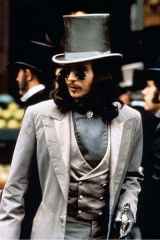 Dracula (1979) would have been the nail in the monster’s coffin, but you can’t keep a good vampire down. Francis Ford Coppola’s poorly named Bram Stoker’s Dracula completed Dracula’s transformation from consumptive monster to tragic lover. After losing his beloved wife to suicide, Dracula rejects the Catholic Church that tells him she’s damned for all eternity. He stabs a cross, drinks the blood that flows from it, and … I guess becomes a vampire. As ludicrous as the opening sequence might appear – and it is ludicrous – this new equation of Dracula as a vengeful martyr on the altar of love is the same tragic vampire narrative that comes back again and again into the future. He’s not bad; the Church made him that way.
Dracula (1979) would have been the nail in the monster’s coffin, but you can’t keep a good vampire down. Francis Ford Coppola’s poorly named Bram Stoker’s Dracula completed Dracula’s transformation from consumptive monster to tragic lover. After losing his beloved wife to suicide, Dracula rejects the Catholic Church that tells him she’s damned for all eternity. He stabs a cross, drinks the blood that flows from it, and … I guess becomes a vampire. As ludicrous as the opening sequence might appear – and it is ludicrous – this new equation of Dracula as a vengeful martyr on the altar of love is the same tragic vampire narrative that comes back again and again into the future. He’s not bad; the Church made him that way.
There’s no doubt that large swathes of the film are pulled directly from the book, from characterization to dialogue, and certainly it is a film that comes closest in plot details to Stoker’s original work. However, there the resemblance between Bram Stoker’s Dracula and Bram Stoker’s Dracula ends. Coppola could not resist keeping Drac a tortured lover, his evil created not by himself but by his abuse by the Church. Van Helsing (played with remarkable insanity by Anthony Hopkins) is himself a reincarnation of a churchman who angered Dracula in the first place. Even beyond the problems of adaptation, the film is a royal mess that never quite decides on its tone, shifting from surreal fantasy to romance to horror and, in one memorable and largely pointless sequence, near-pornography.
Still, much credit must be given to Gary Oldman’s performance as Dracula. His Count is both the diseased corpse of Nosferatu and the urbane gentleman of Lugosi and Langella. He’s associated with blood disease – there are some uncomfortable parallels with the AIDS crisis – and comes back onto the screen as an elegant corpse, decayed but still walking. By the time he’s reached England, Dracula has absorbed enough new blood to transform into a dashing gentleman, and it is in this guise that he seduces Mina and rapes Lucy. He unites all the concerns of the previous films into one massive, end-all vampire: a tragic hero, a lover, a villain, a murderer, a seducer, a rapist, a corpse. Bram Stoker’s Dracula might have little to do with Bram Stoker’s Dracula, but it serves as the ultimate representation of our favorite Count.
The Future of Dracula
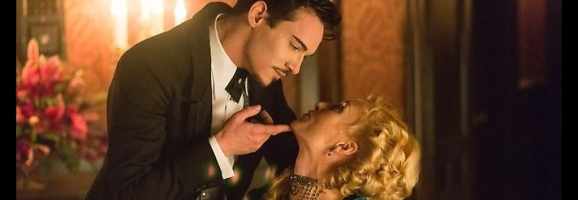
One might almost have hoped that Oldman would be the last word in Dracula performances. Alas, it was not to be. Dracula has returned in various guises, all of them increasingly camptacular. He was pretty much Judas incarnate in Dracula 2000, and a shrieking over-actor in Van Helsing. A number of ‘true’ tales of Vlad Dracule have popped up, most them highly fictionalized. Contemporary vampire stories like True Blood and Twilight have the Count to thank for 3/4s of their lore. Most recently we can see Dracula in Dario Argento’s Hammer-inspired Dracula 3D, though even that has received paltry reviews and confused glares.
Now NBC has a new and bloody version of our favorite Count hitting the airwaves with a limited series Dracula, starring Jonathan Rhys Meyers. While we’ve yet to enjoy the first episode (that’ll hit on October 25), the trailers and clips have given us far more the dashing gentleman with a taste for blood than the walking cadaver that Stoker wrote. Rhys Meyers’s Count will pose as an American businessman seeking vengeance for the death of his wife centuries before. There will be sex, vengeance and fangs. In other words, this bears no resemblance to Stoker’s creation, but a resounding one to Coppola’s.
Stoker’a Dracula was an ancient evil who destroys and corrupts, but has no need for seduction. Dracula is sexual, but it is a sick sexuality, and it is centered on the violation of the female characters, not the mad-hot Count. Dracula has now been fully transformed into the romantic figure of darkness, a tortured vampire who’s not really so very evil. The Count is a cliché, a Halloween costume, and on-screen iterations have entirely stripped him of what horror he once possessed. At best he’s a romantic figure set up for indulgence in sex and blood. Stoker held up a monster that was a reflection of the dark underbelly of his society. Over the years, it’s amazing how quickly they de-fanged him.
What do you think? Leave a comment.










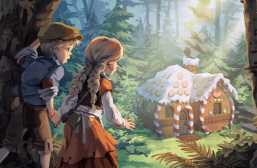
Strong article Lauren. I don’t know if NBC’s show will have the depth I expect of it. There is some bloodshed in the trailers. And I think the idea can be done well, though that has rarely ever happened. The problem really comes in when the sympathetic, tragic elements they graft onto the character and the overtly sexual and romantic nature they give him all overwhelm any sense of monstrous horror, which should be the most important aspect of the character.
If there’s going to be a tragic backstory, the tragedy should be that a relatively good man became a cold, heartless, undead monster. NOT that he was deprived of his lady love.
On top of totally bastardizing Count Dracula, it becomes twisted when you consider that the biggest interaction between Count Dracula and Mina is a symbolic rape scene. A woman being attacked by a monster who forces himself on her. You’d think that in a culture so sensitive to rape, people would be appalled by the idea of turning a rape-like event into a romantic love affair. What next? A romance between Charles Manson and Sharon Tate? Are we going to see a film or series inspired by Oliver Twist that depicts Bill Sikes as a sexy badboy with a passionate romance with his downtrodden lover Nancy?
Dracula is a horror story. Let’s keep it that way.
The 1931 Dracula is horrible! There were better movies at the time, Phantom of the Opera, Hunchback of Notre Dame and The Cabinet of Dr. Caligari were WAY better movies than this. Even Nosferatu was a better movie, movies that really did inspire. I think Dracula is as big as it was because it was not a silent film, the novelty of being a talkie probably helped it a lot.
I think the movie is overrated. Is like when they make a movie today and there is so much hype around it people don’t even care if it is good or not, that happens to a lot of movies today, the hype builds up and builds up, This was probaby the case back in 1931.
There were better movies that came out even before Dracula, and after, Frankenstein is much much better. This movie lacked a good director and even the Spanish version of Dracula is better And more complete.
This was made during the great depression so money had to be spent wisely and special effects were nowhere near as advanced as they are today so they had to make plenty of sacrifices to make the film. Movies also weren’t as long either and couldn’t be that graphic so they had to speed up the story and imply more of the Gothic imagery and violence by having the characters describe to the audience. Back when it was released Dracula was the first horror movie with sound and helped launch Universal’s slew of monster movies that would later be recognized throughout the general public as the grandfathers of terror. Feel free to dislike it, but at least appreciate it’s impact on the genre.
It may be slow in pace and lacks excitement for a 2013 audience but that certainly wasn’t the cast in 1930. It’s not that its a great film its how iconic it is, and how good Bela was in the title role. The Director was known for silent films and struggled to convert this style into a talkie, it would probably worked better as a silent movie and cut down the dialog.
Still looks beautiful, atmospheric and creepy. Bela is still amazing and Dwight fry keeps the movie ticking over. It is a product of it’s time and shall always been a classic an so iconic. Nobody tends claim the film as a masterpiece.
I agree with the others: it can indeed appear dated and even dull/bizarre at times, but the 1931 Dracula is perhaps the most iconic Dracula film ever, and immensely important both in the history of horror movies and the history of vampires on screen. Lugosi’s performance stands out.
I disagree about Tod Browning being a poor director. While I wouldn’t consider this his greatest film (I suppose you have to go with Freaks or one of his silents with Lon Chaney), it is a fascinating work.
Great article! Well written and should be a first stop for new fans of Dracula. But let’s not forget the BBC 1977 version (titled “Count Dracula”), the most faithful adaptation of the novel to date.
Christopher Lee is my favourite Dracula. He was a feral, animalistic, vicious Dracula that barely spoke. His portrayal made him a metaphor for sexual liberation which was expanded upon by later portrayals of Dracula and vampires in general.
In real life Vlad III, known as Vlad Dracula, was a Christian prince and warrior who is most remembered in Romania as a national hero who fought – with some success – to save Eastern Europe from the invading Ottoman Turks. His first wife committed suicide rather than be captured by the Turks and his second died of an illness. From what little I’ve seen of the TV series previews it appears that the series’ producers have decided not to make Muslims the bad guys. True, they weren’t Dracula’s only enemies (he had a LOT of them, to put it mildly) but they are the only ones with any connection to the violent death of any of his wives. It will be interesting to see where this goes, and very disappointing if the Turks somehow disappear from the narrative.
This show isn’t kind to the historical figure or the vampire. They stripped him of all of his traditional powers to make him “more realistic”. Meanwhile in Victorian England the female vampire hunter is doing back flips in shiny red leather.
And it’ll probably be a hit…
Murnau’s Nosferatu is my all time fav adaptation with Herzog’s a close second!
I really enjoyed this article, it is so well written and shows a great deal of research. I’m glad you higlighted the racial undertones in Murnau’s Nosferatu – that was a talking point in my film class. It’s interesting how Dracula has transformed from a evil, powerful figure to someone that evokes a lot of sympathy- a romantic anti-hero of some kind.
Thank you for this, I really enjoyed it.
Thanks. I’m pleased that you found it interesting. Nosferatu is a disturbing film when considered from the perspective of race, and the equation of vampirism with plague or pestilence. That does come into the novel, though, – the concept of ‘invasion from the East’.
Nosferatu is a very good silent film but I do not consider it a real Dracula adaptation.
Why don’t you consider it a Dracula adaptation? It would even have used the same names were it not for the lawsuit by Stoker’s widow.
Does this count as a Dracula movie? The vampire is Grak Orlok or Nosferatu. Sure, the movie was blatantly ripping off the Dracula, but plenty of movies do that using different characters.
If Nosferatu is a Dracula movie, then I say so is White Zombie (which was a zombie movie ripping off Lugosi’s Dracula movie).
Nosferatu was actually based on the novel; it was just an unauthorized adaptation. They changed the names, but Stoker’s widow tried to sue the studio and have the entire film suppressed and all prints destroyed. It follows the plot of the novel just as much as, say, the 1931 Dracula, or the 1979 Dracula, or the Horror of Dracula. White Zombie isn’t a vampire movie; it’s trading on the recognition of the Lugosi as Dracula, yes, but it has nothing to do with the character.
My personal favorite Dracula is Frank Langella’s performance. He had the looks, the personality, charm, charisma, and sex appeal. Also he knew how to carry that cape really well 😛
Christopher Lee’s performance is timeless though. Although he’s not my favorite, he knew how to make you feel personally welcome and safe one moment, but the next he’s grabbing your face and pulling you towards him and sinking his teeth into your neck.
The scariest Dracula of all time is Max Schrek’s Nosferatu. Gary Oldman was great, but that was more of the high school puppy love romance and he was a little too sissy at times for me rather than scary.
Christopher Lee was the PERFECT Dracula, and one that frightened me most. Period. He was just impeccable, utterly brilliant! I have all Hammer Draculas on DVD, and they are truly my most prized possessions. I never get tired of watching them.
Interesting analyses of each Dracula film.
I liked Christopher Lee’s portrayal of Dracula. It’s nothing like Bela Lugosi’s creepy talk like: “Tomo-rrow we’ll be leaving”, “I bid you welcome” and Lugosi’s creepy eyes that accompany a very subtle, yet inhumane form that only Lugosi can make work.
Christopher on the other hand talks only to minimum. Unlike Bela’s motives of searching for blood in London, this vampire literally does crave on blood. Now, I’m not saying Lugosi’s didn’t either, but I’m saying that Lee’s was more scary in my opinion in the way he done it (You know how when the camera goes right onto his face and you see his teeth, I always find that essential Dracula of the modern times, even though it was made in 1958). Intimidating and with no remorse to his actions, this Dracula still remains as legendary as The Bela Lugosi version.
But outside the comparison, Christopher really does bring a brand of uniqueness. When he’s coming the window to bite Arthur’s sister, which would then keep her remaining sick and… well I think we all know what happens. So, yeah, I thoroughly enjoyed Ths Dracula movie.
I love Dracula 1992, but I must admit that it drowns its story in soup of overblown stylization, the film of a director who is in love with the director. Even good actors become caricatures of themselves in Coppola’s Gothic cartoon. Dracula 1958 demonstrates the height of film craft in its era, and is propelled by two landmark performances: Peter Cushing as Van Helsing and Christopher Lee as Dracula. Every vampire film made after Hammer’s masterpiece owes its violence, sexuality, and romance to their groundbreaking work.
Me and my mates were discussing how we would cast our own adaptation of Dracula, this was my picks:
DIRECTOR: Peter Jackson, Sam Mendes, or David Fincher
COUNT DRACULA: Mads Mikkelsen
JONATHAN HARKER: James McAvoy
MINA MURRAY-HARKER: Jennifer Lawrence
LUCY WESTENRA: Emma Stone
ABRAHAM VAN HELSING: Liam Neeson
QUINCY MORRIS: Casey Affleck
LORD ARTHUR HOLMWOOD: Michael Sheen
DR. SEWARD: Michael Fassbender
RENFIELD: Hugh Laurie
BRIDE #1: Rhona Mitra
BRIDE #2: Kiera Knightly
BRIDE #3: Monica Bellucci
I think Emma Stone and Jennifer Lawrence are some of the best up and coming A-list actresses I’ve seen in the last few years. I think it’d be interesting to see some of these European beauties as Dracula’s brides, even though they’d be small roles. And Mads Mikkelsen as Dracula… there should be no other.
Now that would be amazing!
Ok vampires I ask myself…
As you see society in todays day and age you will discover people’s facisination with blood sucking human like creatures … why you ask
Now we all have to understand that we have been living in the modern day for many hundreds of years understanding that creature’s of this world do exist and why do we play on 5ue the human mind with such imagery. You will discover hopefully some time in you life that this is to do with controlling ones mind with such like pictorials so that to say look here see this you will see it soon.
They (the above average) would like you to know that they have in control and discovered vampires ready to release into society when they think its right when people like me don’t exist and question thier plan so if we are lucky enough to survive on this planet to 2099 you will see I was right all along and societys brains will be closed annd only certain parts of fear feeling andnhunger will exist mark my words vampires are already here and only time will tell once they feel the time is here for them to hany in society.
Great article. Stoker’s novel is, in my opinion, one of the best Victorian era works of fiction there is. Its incorporation of modern technology (e.g., the typewriter, amongst many other things) and depiction of Lucy as the “New Woman” was a great representation of the changing times. Of course the content itself is nothing short of wonderful. That said, I do feel like Polidori’s work gets the shaft sometimes — mainly because people aren’t always aware of it. But it’s definitely a worthwhile read.
Murnau’s 1922 film is one of my favorite silent films. And Herzog’s 1979 film is actually one of my favorite films, period. His work with light and dark/shadows, sanity and insanity, and many other things is incredibly brilliant. As someone who studies film, is it blasphemous for me to say I really don’t care for the 1931 version of the film? I anxiously awaiting NBC’s version coming later this month. My expectations are set VERY low, but I think it will be interesting to see a TV version of this classic. I’m hoping the TV version at least does *some* justice to the novel and is able to add meaning and build onto the vampire tradition. But based on some of the promos I’ve seen, I’m not holding my breath. I REALLY hope I’m wrong about this one…
The Return of Dracula is a great one. It is definitely a low budget, barely B-movie grade 1950s production but is does have wit, style, and a very sly turn by Francis Lederer as a vampire posing as a long-lost relative from eastern Europe.
The Nosferatus are truly amazing, but I love the vivid and lurid technicolor of Hammer’s Dracula.
Dracula, the 1958 version, had such an effect on me when I first saw it on TV as a kid. For some reason I just thought that was the most exciting scene ever when Peter Cushing breaks away from Dracula, runs down the length of the table in the great hall and leaps for the curtain. As an adult I’ve just come to appreciate how magnificently written and directed that scene was.
It is a real visual treat.
What about the seriously underrated Duncan Regehr in The Monster Squad?
The 1979 Dracula film starring Frank Langella is the best. In this version Dracula is charmed by Lucy (the daughter of the food obsessed Dr. Seward). He chooses to make her his queen. He is both romantic yet predatory. And Lawrence Olivier as Abraham Van Helsing was fantastic. It has amazing wolf and bat transformations done solely with practical effects far superior to some computer generated effects of today. They kept all of his traditional powers and Frank Langella was even roughly the right age (early forties) for playing the de-aged Dracula. It doesn’t follow the book but it’s a very good and under-rated Dracula movie that I used to find boring when I was a kid. My only complaint is the director thought it would look better in black and white so he had most of the colors washed out for the DVD. I wish someone would restore the film to it’s original colors.
Have anyone watched an indie movie named Bonnie and Clyde vs Dracula? Weirdy enough, B&C part is quite good, and the actors are attractive and have an amazing chemistry. Then, they arrive in some mansion with a crazy scientist living there who holds Dracula captive. Bonnie becomes a vampire and they destroy Dracula together with Clyde. That was a gem.
Wow great post! Happy Halloween!!
I’ve seen the new version, and I must say I am not enamoured with it. Rhys Meyers looks right as Dracula, but his eyes are so wooden, and the plotlines he is saddled with hardly help his case. I am usually more lenient with remakes and revisionings, but when they are done in such a way as to predominantly appeal to the ‘vampires are misunderstood’ crowd, they can be irksome. Being Human has a great take on vampires- they can be sexy, or not, much like humans!
I liked how you touched on the fact that while vampires have definitely not always been sexy, there was always a touch of sensuality about being bitten. I would love to see you write something about Dracula’s women, and how they have changed (or perhaps come full circle) over the years. It certainly seems like you have the research down!
A great article, both comprehensive and engaging; an interesting charting of the Dracula figure through its various incarnations. Well done!
A very interesting article! Made more poignant through the newest adaptation being, as you predicted, a tragic lover with no actual depictions of evil or monstrosity.
I’m watching the new Dracula series and enjoying it. The cast isn’t the best but Jonathan Rhys Meyers is surprisingly doing a good job. I’m just glad, we’re getting the traditional vampire back, instead of glittery vampires. Great and interesting article.
Great article Lauren, I really like the way you offered a 350 degree view point bringing in the historical evolution of the character of Dracula. It doesn’t stun me that the character has become more romanticized, something television does often. Great job!
You wrote a tremendous article on the history of Dracula. I agree with your analsysis, “The Horror of Dracula makes Dracula a powerful and sexual monster.” I wrote an essay on that film. I argued that Christopher Lee’s version is the Devil Incarnate. You can read it here if you are interested: http://christopherjohnlindsay.wordpress.com/2014/03/17/horror-of-dracula/
Thanks for this article. It is very comprehensive and summarizes the trend in depiction of Dracula well.
I am one of those who find “romantic lover” version of Dracula unsatisfying(I used to hate it with passion) due to the fact that it pretty rejects the strengths of Dracula’s character as a villain. And also it degrades Mina’s character in my opinion – that she is falling in love with a person who caused the death of her friend, and who (possibly) raped her just because she was his love interest in the past life. The romantic notion also destroys Mina as an intellectual character who figures out Dracula’s pattern and contributes to his downfall – in such versions, Mina either conspires with Dracula, or plays passive damsel separated from her lover, both of which removes intelligence and strength away from her.
Do you think there will be newer reinterpretation of Dracula in near future?
You are all mere cretins unto me.
Kneel before your Saviour.
https://www.youtube.com/watch?v=-Vp-ogTwtwo
Awesome, comprehensive article. I tend to dislike (read: despise) the tragic lover slant because it tends to romanticize Dracula at the expense of Mina’s agency (dead wife reincarnation!) and undermine the narratives of his abuse and assault victims (Mina; Lucy; Jonathan). With NBC’s Dracula, the demonization of Jonathan, an abuse victim who suffers a mental break, and the depiction of a feminist(TM) Dracula utterly confounds me. Also, the whole “reincarnated wife!Mina loves the vampire who tormented her husband led to her best friend’s death” thing is just…ugh….